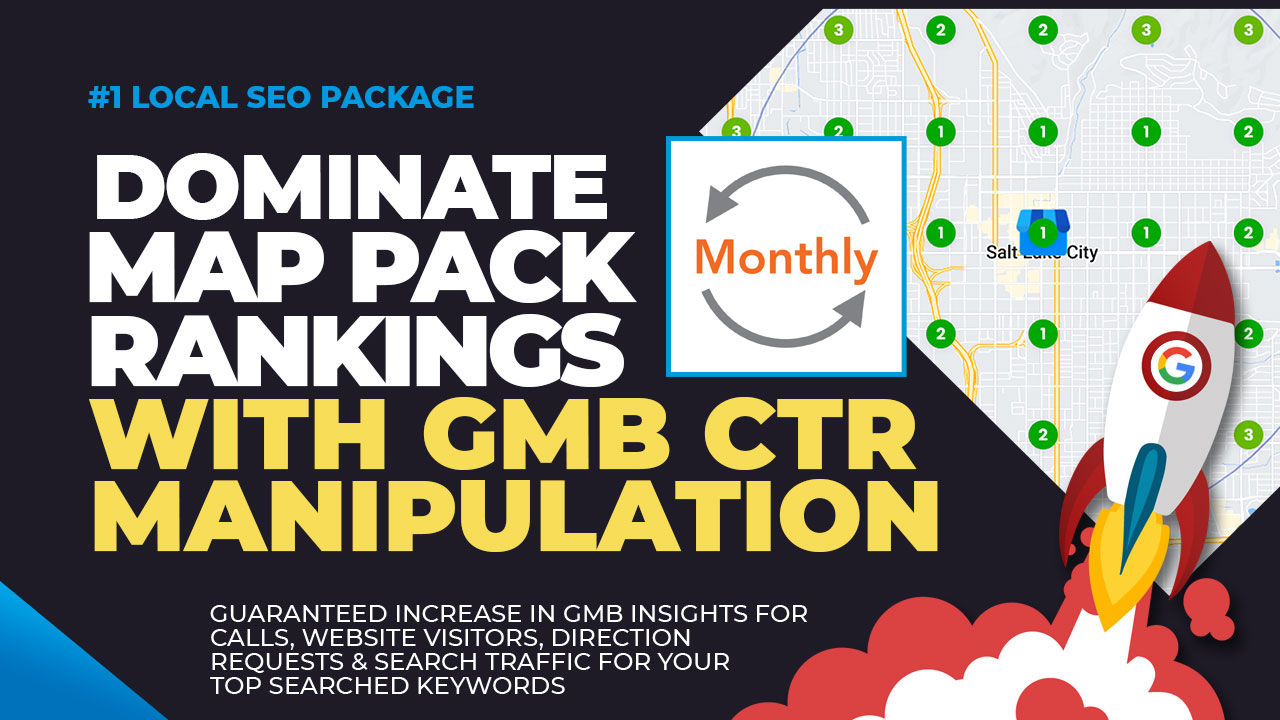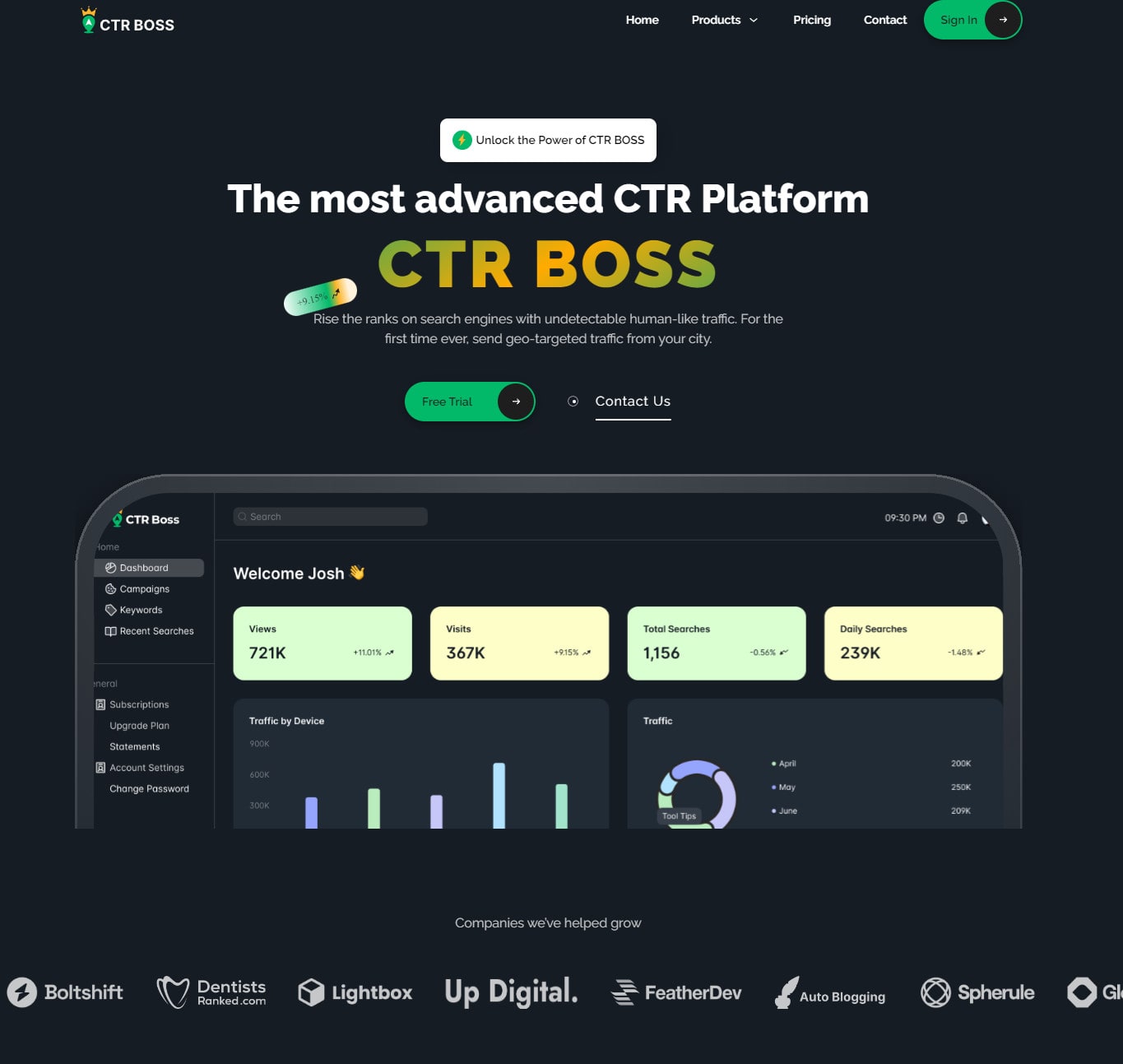The Influence of a CTR Manipulation Press Release on Brand Awareness
The Influence of a CTR Manipulation Press Release on Brand Awareness
Blog Article
How to Measure the Impact of CTR Control on Your Marketing
Understanding the subtleties of click-through rate (CTR) adjustment in advertising and marketing is essential for companies aiming for authentic user engagement. By taking a look at crucial metrics such as conversion prices and bounce rates, marketers can discover possible disparities that may emerge from synthetic improvements.
Comprehending CTR Control
Understanding CTR control is crucial for online marketers seeking to enhance their campaigns and make certain information honesty. Click-through rate (CTR) refers to the proportion of individuals that click on a details link to the overall number of users that view the advertisement or material.
The effects of CTR adjustment prolong beyond plain information distortion; they can weaken count on digital advertising and marketing. When services depend on filled with air metrics, they might buy inadequate campaigns, ultimately harming their return on investment. In addition, platforms might penalize advertisers participating in such practices, leading to further implications for their advertising and marketing initiatives.
To effectively battle CTR adjustment, marketing professionals need to establish an extensive understanding of their information resources and analytics tools. By using sophisticated monitoring approaches and inspecting website traffic sources, they can determine irregular patterns and make sure that their performance metrics mirror genuine individual involvement - CTR Manipulation. This caution is vital for cultivating lasting success in a significantly affordable electronic landscape
Trick Metrics to Analyze
Reliable evaluation of vital metrics is critical for reviewing real performance of advertising campaigns and finding prospective CTR adjustment. One key metric to think about is the Click-Through Price (CTR) itself, which represents the proportion of individuals that click on an ad to the overall number of individuals who see it. A sudden spike in CTR might suggest adjustment, requiring additional investigation.
In addition, checking conversion prices is vital. A high CTR with a low conversion price might signal that the clicks are not genuine or that the targeting is misaligned (LinkDaddy CTR Manipulation). Similarly, assessing bounce prices can give insight into customer interaction; a high bounce price after a click might recommend that the website traffic is not quality-driven.

Tools for Dimension

Furthermore, A/B testing devices such as Optimizely or VWO can facilitate experimentation with numerous advertisement variations to figure out which elements drive higher CTR. These devices enable marketers to evaluate real-time efficiency and make data-driven changes. Social media analytics devices, like Hootsuite or Sprout Social, can also contribute in understanding CTR within social systems, providing understandings into audience behavior and interaction fads.
Moreover, warmth mapping tools, such as Hotjar, can reveal just how individuals communicate with advertisements, assisting to recognize where improvements can be made. Incorporating these devices develops a durable dimension framework, allowing marketing experts to determine the results of CTR manipulation properly. Eventually, the appropriate option of measurement tools is essential for making notified marketing decisions and maximizing project efficiency.

Examining Lasting Effects
One have to think about the long-term impacts of CTR adjustment on total marketing efficiency, as temporary gains can typically mask deeper implications. In time, artificially blew up click-through prices may lead to reduced trust fund from Homepage consumers and internet search engine alike. When customers continuously experience deceitful practices, they may become reluctant to involve with the brand name, resulting in reduced conversion prices in the future.
In addition, algorithm updates from platforms such as Google are made to prioritize genuine interaction over inflated metrics. Organizations that depend on CTR control may locate themselves penalized, leading to a decrease in organic reach and exposure. This can have a plunging impact on brand reliability and customer commitment, ultimately undermining the extremely objectives that the preliminary adjustment sought to attain.
Additionally, the data gathered from controlled CTR may mislead online marketers news in their approach advancement. Depending on skewed information can cause illinformed projects that stop working to reverberate with the target market, leading to lost sources and missed out on chances. It is critical for marketing experts to analyze the lasting implications of CTR control and prioritize lasting, ethical interaction approaches for lasting success.
Moral Considerations in CTR Control
In the world of digital advertising and marketing, ethical considerations bordering CTR control are extremely important. While the desire to improve click-through prices (CTR) can result in temporary gains, the potential long-lasting effects on brand integrity and consumer trust fund can not be overlooked. Controling CTR usually involves strategies that may mislead individuals, such as clickbait headings or deceitful advertising and marketing practices. These techniques can cause a transient boost in web traffic yet might inevitably deteriorate client self-confidence.
In addition, moral concerns encompass conformity with laws such as the Federal Trade Commission (FTC) guidelines, navigate to this website which mandate transparency in advertising. Failing to follow these standards can subject services to legal ramifications and damage their reputation. Online marketers need to take into consideration the effects of their techniques on user experience and the broader sector landscape.
Furthermore, the rise of man-made intelligence and automation in advertising offers additional moral problems. Inevitably, ethical advertising and marketing methods ought to focus on openness, honesty, and regard for the customer, fostering lasting connections that transcend simple metrics like CTR.
Conclusion
Finally, determining the influence of CTR adjustment on marketing requires an extensive evaluation of key metrics, including click-through rates, conversion rates, and bounce rates. Using analytics devices and conducting A/B testing can supply beneficial understandings right into customer involvement and traffic high quality. Assessing lasting results and sticking to honest factors to consider is important for notified decision-making. Eventually, a data-driven technique makes sure that advertising approaches are reliable and lined up with real customer communications.
Understanding the nuances of click-through rate (CTR) manipulation in advertising and marketing is necessary for companies striving for real individual interaction.Effective evaluation of essential metrics is critical for examining the true efficiency of advertising campaigns and detecting prospective CTR manipulation.One have to think about the lasting results of CTR control on overall advertising performance, as temporary gains can frequently mask much deeper ramifications.In the realm of digital advertising and marketing, honest factors to consider surrounding CTR control are critical.In conclusion, determining the influence of CTR manipulation on advertising calls for an extensive evaluation of key metrics, including click-through prices, conversion prices, and bounce rates.
Report this page